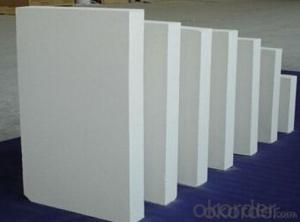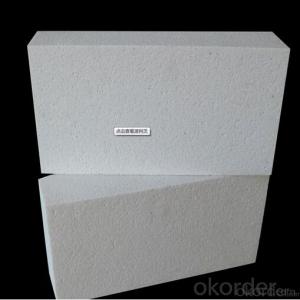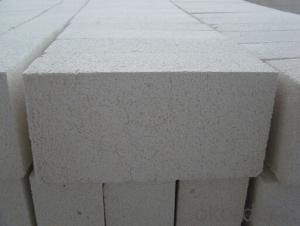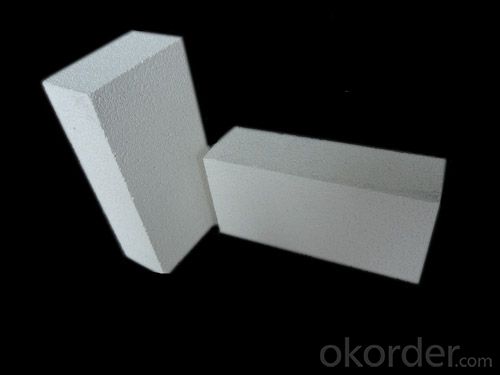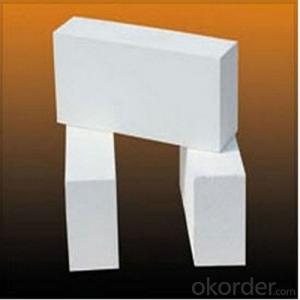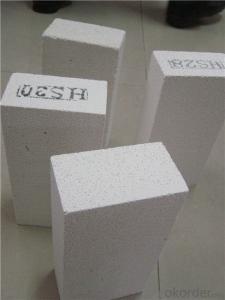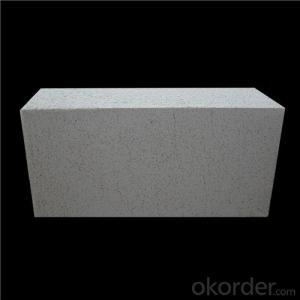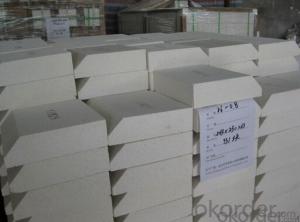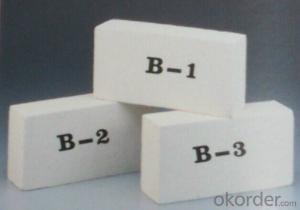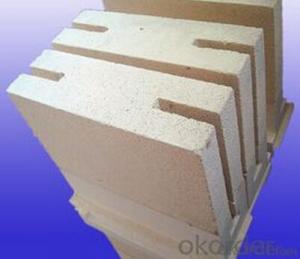Insulating Fire Brick - Refractory Mullite GJM 23
- Loading Port:
- Shanghai
- Payment Terms:
- TT OR LC
- Min Order Qty:
- 5000 kg
- Supply Capability:
- 1000000 kg/month
OKorder Service Pledge
OKorder Financial Service
You Might Also Like
OKORDER Series Insulating Bricks
OKORDER series insulating bricks are a kind of highly efficient, energy saving, low-carbon, environmental protection advanced products which are manufactured according to ASTM standard. OKORDER series products are the best lining and insulation materials in all types of industrial furnaces in the field of Metallurgy, Aluminum, Petrochemical, Ceramics, Power and Glass. They can be applied as heat insulation or no-melt erosion parts of the working layer. The products have been widely used in the following furnaces and achieved satisfactory results.
Application of Insulating Bricks
Metallurgy industry: Blast furnace, Hot blast stove, Reheating furnace, etc.
Petrochemical industry: Ethylene cracking furnace, Hydrogen production furnace, Primary reformer furnace, Reheating furnace, etc.
Ceramics Industry: Roller kiln, Pusher kiln, etc.
Glass industry: Glass furnace regenerator, etc.
Carbon Industry: Carbon roaster, etc.
Aluminum electrolytic industry: aluminum reduction cells,etc.
Other industries: Tunnel kiln, Shuttle kiln, etc.
Advantages of Insulating Bricks
Low Thermal Conductivity: More porosity brings excellent insulation effect, energy saving.
High Crushing Strength: High crushing strength under thermal state, volume stability.
Low Heat Storage: Little thermal storage when absorb more heat, energy saving effect is obvious.
High Purity: Low content of iron, alkaline and metal impurities.
Accurate Dimension: Precise brick size by machining, cutting and grinding special shapes, expediting bricklaying.
Picture of Insulating Bricks
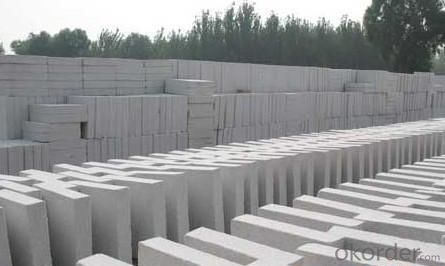
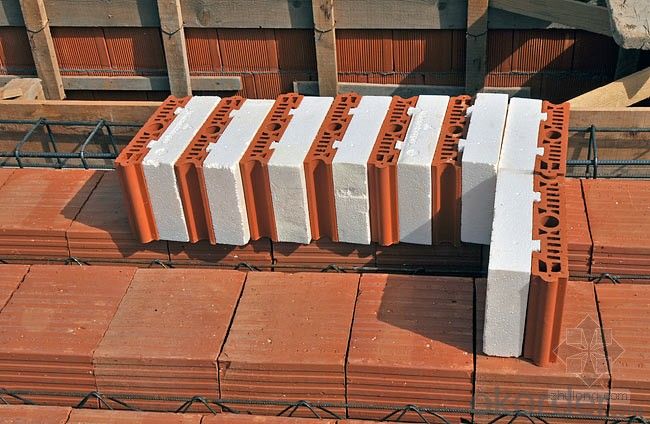
FAQ
1. Which products do you have?
We have all kinds of refractory brick, castable, mortar, cement, ceramic fiber products, etc.
Or you could browse our products to choose what you need.
2. How do you control the products quality?
With strict quality control system throughout the materials selection and production process, our refractory and ceramic fiber products quality is effectively controlled to meet customer requirements.
From the raw materials selecting, our quality control begin. The quality certificates of raw materials are required and each batch will be tested before using. During production, the quality control are conducted by workers and then each piece will be sorted and examined by quality supervise.
3. Can you give me a brief introduction of the application of your products?
We are mainly specializing in the refractory materials in iron and steel, cement, glass, ceramics, petrochemical, electric power Industry, etc.
4. If I need your offer, what information do you need?
In order to choose suitable products, it will be appreciated to provide us the information, such us specification, technical data, order quantity, products application etc.
If any question, please contact us freely.
- Q: Are insulating fire bricks resistant to thermal fatigue?
- Insulating fire bricks exhibit remarkable resistance to thermal fatigue. These bricks are purposefully engineered to endure elevated temperatures and thermal cycling without experiencing any cracks or fractures. Composed of refractory materials with exceptional thermal shock resistance, they possess the ability to expand and contract without suffering significant harm. This capacity to withstand thermal fatigue renders insulating fire bricks highly suitable for applications involving extreme temperature fluctuations, such as kilns, furnaces, and other environments with high temperatures.
- Q: Are insulating fire bricks resistant to erosion?
- Insulating fire bricks, in general, exhibit resistance to erosion. They consist of lightweight materials like alumina, silica, or a combination thereof. These materials possess remarkable resistance to erosion caused by elevated temperatures, chemical reactions, and physical wear. They are engineered to endure extreme heat and harsh circumstances, rendering them highly resistant to erosion. Furthermore, insulating fire bricks demonstrate low thermal conductivity, preventing easy absorption or transfer of heat and thereby affording additional protection against erosion. Nevertheless, it is worth noting that the level of erosion resistance may differ depending on the precise composition and quality of the insulating fire bricks.
- Q: What is the difference between cement foamed thermal insulation board and thermal insulating brick?
- Of course, the market now has a lot of insulation bricks, and some insulation bricks can only do external wall insulation, such as sand, aerated concrete blocks. Some also only do the interior wall insulation, such as gray aerated concrete blocks, and some insulation bricks directly to the base, thus omitting the internal and external insulation, such as concrete composite insulation block.
- Q: Can insulating fire bricks be used in the construction of hearth furnaces?
- Yes, insulating fire bricks can be used in the construction of hearth furnaces. Insulating fire bricks are specially designed to have low thermal conductivity, which makes them ideal for applications where heat insulation is required. In the construction of hearth furnaces, where high temperatures are involved, insulating fire bricks can help to retain the heat within the furnace and improve energy efficiency. They can also provide thermal protection to the surrounding structures by minimizing heat transfer. Additionally, insulating fire bricks are lightweight and easy to handle, which makes them convenient for construction purposes. Overall, using insulating fire bricks in the construction of hearth furnaces can enhance their performance and contribute to a more efficient and effective heating process.
- Q: Can insulating fire bricks be used in chimneys and flues?
- Yes, insulating fire bricks can be used in chimneys and flues. These bricks are designed to withstand high temperatures and provide insulation, making them suitable for use in areas where heat needs to be contained or controlled, such as chimneys and flues.
- Q: Is it possible to recycle broken insulating fire bricks?
- It is indeed feasible to recycle damaged insulating fire bricks. These bricks are typically composed of recyclable materials like clay and alumina. After breaking, they can be crushed into tiny particles or ground into a fine powder. These fragments can then be blended with other substances to produce fresh bricks or alternative construction materials. Furthermore, certain recycling facilities may accept broken insulating fire bricks and repurpose them for use in various industries. By recycling these bricks, waste is minimized, resources are conserved, and the environmental consequences of manufacturing new bricks from scratch are reduced.
- Q: Are insulating fire bricks resistant to mold or mildew growth?
- Insulating fire bricks are resistant to mold or mildew growth. These bricks are manufactured using high-quality refractory materials, such as alumina and silica, which are not conducive to the growth of mold or mildew. Additionally, insulating fire bricks have a low porosity, meaning there is little to no moisture retention, further inhibiting the growth of mold or mildew. Therefore, insulating fire bricks are an ideal choice for applications where moisture and mold resistance are important factors.
- Q: Can insulating fire bricks be used for insulation in aluminum smelters?
- Yes, insulating fire bricks can be used for insulation in aluminum smelters. Insulating fire bricks are made from special lightweight materials that have high insulating properties, making them ideal for applications that require high-temperature insulation. Aluminum smelters operate at extremely high temperatures, and insulating fire bricks can effectively withstand and retain the heat, preventing heat loss and improving energy efficiency. Additionally, these bricks are resistant to thermal shock, a common occurrence in smelting processes, which makes them highly suitable for use in aluminum smelters. Insulating fire bricks can also provide a protective barrier, reducing the risk of heat damage to the surrounding structures and equipment. Therefore, using insulating fire bricks for insulation in aluminum smelters can enhance thermal efficiency, reduce energy consumption, and ensure a safe and efficient smelting process.
- Q: Do insulating fire bricks emit any toxic fumes when heated?
- Insulating fire bricks, also known as refractory bricks, are designed to withstand high temperatures and are commonly used in applications such as furnaces and kilns. These bricks are made of materials that have a low thermal conductivity, meaning they do not transfer heat easily. When heated, insulating fire bricks do not emit any toxic fumes. This is because they are typically made from non-toxic materials such as clay or silica. These materials are chemically stable and do not release any harmful gases or substances when exposed to high temperatures. It is important to note that while insulating fire bricks themselves do not emit toxic fumes, the substances being heated inside the furnace or kiln may produce fumes or gases that could be hazardous to health. It is essential to properly ventilate the area and follow safety guidelines when working with any materials that may release toxic fumes during the heating process. In summary, insulating fire bricks do not emit any toxic fumes when heated as they are made from non-toxic materials. However, it is crucial to ensure proper ventilation and follow safety precautions when working with any materials that may release hazardous fumes.
- Q: Are insulating fire bricks resistant to freeze-thaw cycles?
- Generally, insulating fire bricks are resistant to freeze-thaw cycles. They are designed with low thermal conductivity and high resistance to thermal shock, making them durable and able to withstand extreme temperature variations, including freeze-thaw cycles. This resistance to freeze-thaw cycles is crucial in applications where the bricks are exposed to fluctuating temperatures, like in furnaces, kilns, and other high-temperature environments. Moreover, the insulating properties of these bricks minimize heat loss and prevent moisture penetration, further improving their resistance to freeze-thaw cycles. However, it is important to note that the composition and manufacturing process of the insulating fire bricks may vary, so it is recommended to consult the manufacturer's specifications and guidelines to ensure their suitability for the intended application.
Send your message to us
Insulating Fire Brick - Refractory Mullite GJM 23
- Loading Port:
- Shanghai
- Payment Terms:
- TT OR LC
- Min Order Qty:
- 5000 kg
- Supply Capability:
- 1000000 kg/month
OKorder Service Pledge
OKorder Financial Service
Similar products
Hot products
Hot Searches
Related keywords
